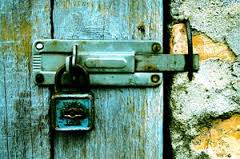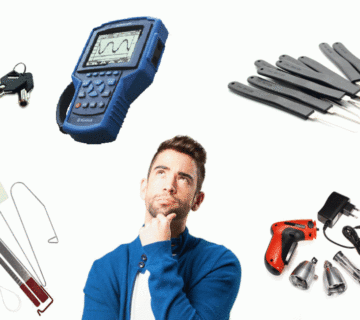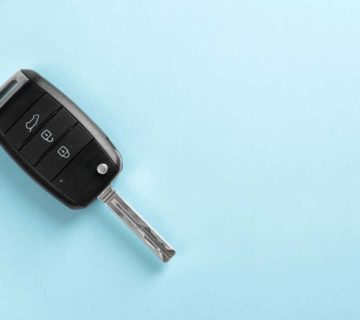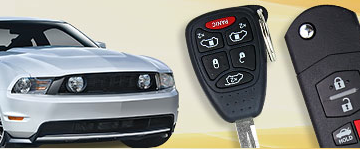HISTORY OF LOCKS
 In 1784, Joseph Bramah licensed a high-security lock that is still fabricated and sold in London today. The outline remains for all intents and purposes unaltered. A barrel shaped key presses a progression of wafers inside the locking system that fills a comparable need to the levers in Barron’s lock: The correct key hits the wafers at particular profundities and withdraws the jolt. Bramah was so certain about his lock’s security that he showed a “test lock” in his store’s window in 1790 and offered 200 gold guineas to any individual who could pick it. (That much gold is worth about $200,000 today.) It remained unpicked until American locksmith Alfred C. Hobbs effectively broke it at the Great Exhibition of 1851. It took him 51 hours. The Bramah lock’s superiority at didn’t stop others from innovating,He added a built-in relocking feature: The so-called detector lock would intentionally jam if the wrong key was inserted. Only the proper key could then open the lock.
In 1784, Joseph Bramah licensed a high-security lock that is still fabricated and sold in London today. The outline remains for all intents and purposes unaltered. A barrel shaped key presses a progression of wafers inside the locking system that fills a comparable need to the levers in Barron’s lock: The correct key hits the wafers at particular profundities and withdraws the jolt. Bramah was so certain about his lock’s security that he showed a “test lock” in his store’s window in 1790 and offered 200 gold guineas to any individual who could pick it. (That much gold is worth about $200,000 today.) It remained unpicked until American locksmith Alfred C. Hobbs effectively broke it at the Great Exhibition of 1851. It took him 51 hours. The Bramah lock’s superiority at didn’t stop others from innovating,He added a built-in relocking feature: The so-called detector lock would intentionally jam if the wrong key was inserted. Only the proper key could then open the lock.
In 1848, Sr. Linus Yale invented a pin tumbler lock. Improvement was made in the initial version in the year 1861 by Linus Yale Jr. son of inventor Linus Yale Sr. On the other hand, The fundamental plan of the wooden stick lock remained generally unaltered until the Middle Ages, when English skilled worker made the primary all-metal warded locks. These locks highlight a keyhole with a barrel on the far end. Inside the keyhole was a progression of concentric plates, or wards that would obstruct a key from turning unless the example of indents on the key coordinated the example of wards. In the event that the key turned uninhibitedly, it would connect with or separate the jolt when turned.
Warded locks remain utilize today, however they’re to a great extent found at memorable locales where they’ve been keeping out frauds for quite a long time. The keys themselves will look natural to any individual who’s ever longed for living in a château, castle or joining a secret society. They’re indeed beautiful very beautiful.
While they weren’t consummately secure, these warded secures ushered another period of craftsmanship. Metal-workers who were highly skill were utilized as locksmiths, outlining and building elaborating locks and keys that coordinated the design of the bequest. By controlling keyhole shapes and adding unpredictability to the wards, locksmiths could build security. In any case, the workmanship of skeleton keys progressed alongside that of the locks. Before the end of the Renaissance, many diverse plans sprung up, and lock picking turned into an art itself. Normally, the craving to create an unlikeable lock got to be distinctly principle.
Through the span of the following century-and-a-half, locksmiths would continue presenting new outlines and enhancing Yale’s plan. Around the turn of the twentieth century, be that as it may, came one of the main insinuations that a lock may accomplish something more than opening or shutting a lock. In 1909, Walter Schlage licensed an entryway lock that could kill the lights on and.
Schlage would later develop the tube shaped stick tumbler lock with a push-catch locking instrument, a helpful little advancement on the Yale outline that you’ve most likely utilized a million circumstances as a part of homes and organizations. The organization that Schlage established stays one of the world’s greatest lock makers. In any case, his thought that a lock could be more than a lock would need to hold up till the computerized age to prosper.
The advancement of physical security is a great deal more muddled than a straight history of locks and keys. The antiquated Romans likewise spearheaded the soonest mix locks, changing the key from a question into a thought. James Sargent propelled this thought considerably facilitate by imagining the world’s first key-variable mix secure 1857. Sargent made locks more intelligent when he made the world’s first time lock, which would just open at a set time, and time-defer locks, which would just open after a specific interim, in 1873 and 1880, separately.
The possibility of an instinctive lock that would open for someone in particular at a specific time took off in the late twentieth century.
Lock veterans like Yale and Schlage—alongside a blossoming number of new companies—mean to lead the path toward a keyless future. This year, both organizations declared new associated locks that will open with the swipe of a cell phone or even the sound of your voice.
People have been utilizing out-dated keys opening straightforward tumbler locks for a huge number of years. It’s less demanding than at any other time to perceive how the eventual fate of physical security could be founded on encoded systems that can advance and learn. The innovation that could identify when you’re strolling up to your front entryway and open it before you go after your keys as of now exists. Presently, it’s a race to see whether we truly need these propelled security arrangements make our lives more secure and helpful.



